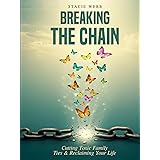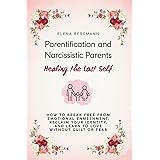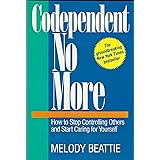Understanding the Path to Freedom from Addiction
Reports indicate that millions globally contend with various forms of addiction annually. This struggle can feel isolating and overwhelming. The accompanying video above powerfully illustrates the journey to break free from these pervasive habits. It highlights the potential for reclaiming control and rebuilding a fulfilling life. This article expands on the crucial steps necessary to overcome challenges like smoking, excessive drinking, gambling, or problematic phone use. The process requires understanding, strategic action, and unwavering determination.
Understanding the Grip of Addiction
Addiction is more than a bad habit; it is a complex condition. It affects brain function and behavior. Chemicals like dopamine play a significant role. These substances or activities hijack reward pathways. Consequently, repeated exposure reinforces these neural connections. Over time, the brain begins to crave the addictive stimulus.
The Cycle of Habit Formation
Habits form through a simple loop: cue, routine, reward. Imagine if a stressful day consistently led to reaching for a cigarette. The stress is the cue. Smoking is the routine. The momentary calm is the reward. This cycle becomes deeply ingrained. It operates almost automatically. Breaking this cycle is paramount for recovery. It requires conscious effort and new patterns.
Furthermore, different addictions manifest uniquely. Smoking involves nicotine dependence and physical withdrawal. Alcohol addiction impacts both body and mind profoundly. Gambling addiction creates a psychological high. Phone addiction can alter attention spans. Each presents its own set of challenges. Understanding these distinctions is critical for tailoring effective strategies.
Developing a Strategic Exit Plan
Breaking free from addictions demands a structured approach. It is not simply about wanting to stop. It requires a clear, actionable plan. This plan must address specific triggers and behaviors. It empowers individuals to navigate difficult moments. It also builds resilience against potential relapses.
Identifying Your Specific Triggers
Every addiction has its triggers. These are cues that prompt the urge to engage. Triggers can be internal, like stress or loneliness. They can also be external, like certain places or people. Consider if walking past a bar initiates a craving for alcohol. Or perhaps specific social media notifications trigger endless scrolling. Identifying these patterns is the first step. Once recognized, strategies can be developed to avoid or manage them. This proactive stance is invaluable.
Building New, Healthier Habits
Quitting an addiction leaves a void. Filling this void with positive alternatives is essential. Imagine replacing your evening cigarette with a brisk walk. Or substituting gambling with a new hobby like painting. These new habits provide healthy rewards. They help rewire the brain’s reward system. Over time, these positive routines become stronger. They naturally displace the old, destructive ones. Consistency in these new habits is key.
The Power of Support Systems
Nobody needs to face addiction alone. Support systems are vital for sustained recovery. This can include family, friends, or professional counselors. Group therapy sessions also offer immense value. They provide a space for shared experiences. Moreover, accountability partners can offer encouragement. They help maintain focus during challenging times. Seeking professional guidance is particularly beneficial. Therapists can offer tailored strategies. They provide coping mechanisms. They also help address underlying issues. Building a strong network reinforces your commitment. It provides comfort during difficult phases. This collective strength fosters lasting change.
Nurturing Mental Fortitude
The journey to break free from addictions is profoundly mental. It requires significant internal strength. Cultivating mental resilience is therefore crucial. This involves developing new ways to think and respond. It strengthens your resolve against cravings and setbacks. It ensures a stable and healthy mindset.
Practicing Mindfulness and Self-Compassion
Mindfulness helps individuals stay present. It allows them to observe cravings without reacting immediately. Instead of impulsively acting, one can pause. This pause creates a crucial space for choice. Self-compassion is equally important. Recovery is not a linear path. Setbacks can occur. Treating oneself with kindness during these times is vital. It prevents self-blame from derailing progress. Imagine if you slipped, then chose self-forgiveness over despair. This approach fosters a growth mindset. It encourages continued effort rather than giving up.
Moreover, stress management techniques are indispensable. Stress often acts as a significant trigger. Techniques like meditation or deep breathing exercises can help. These practices lower anxiety levels. They prevent emotional overwhelm. Consequently, they reduce the likelihood of seeking comfort in addictive behaviors. Prioritizing mental well-being creates a stable foundation. It supports long-term recovery efforts. This holistic approach strengthens both mind and body. The commitment to break free from addictions is a profound one. It reshapes one’s entire existence. Embracing support and employing robust strategies paves the way forward.











